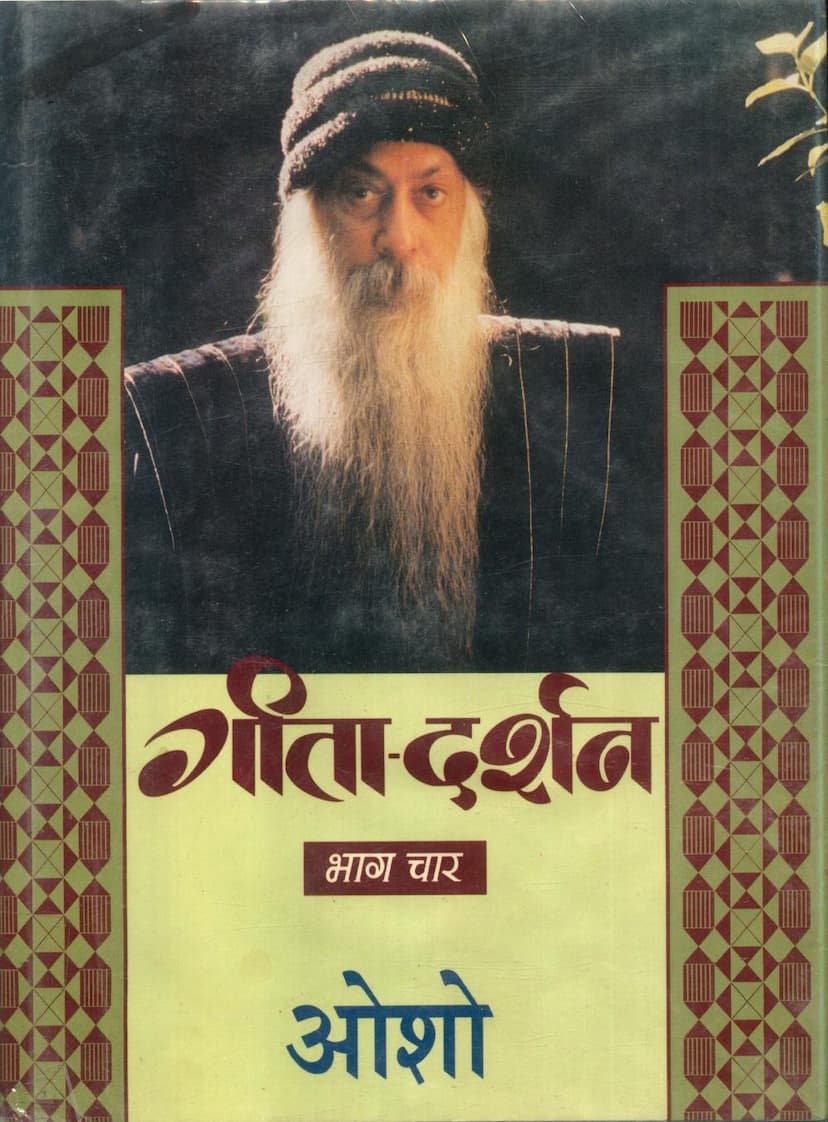Gita Darshan Part 04
Added to library: September 1, 2025
Loading image...

Summary
This is a comprehensive summary of Osho's "Gita Darshan Part 04," which focuses on Chapters 8 and 9 of the Bhagavad Gita. The text contains 24 discourses by Osho on these chapters.
Key Themes and Concepts:
- The Nature of Reality and Consciousness: The book delves into the fundamental questions of existence, exploring the nature of Brahman, the self (Atman), and the relationship between the material world (Adhibhuta), the divine principle (Adhideva), and the inner spiritual reality (Adhiyajna). Osho emphasizes that the ultimate reality, Brahman, is unchanging and eternal, beyond the grasp of senses, and can only be realized through inner exploration.
- The Path to Liberation: The discourses highlight various yogic paths, including Karma Yoga (action without attachment), Bhakti Yoga (devotion), and Dhyana Yoga (meditation). These paths are presented not as separate disciplines but as integrated approaches to achieving inner transformation and realizing the divine within.
- The Importance of Consciousness and Awareness: Osho stresses the significance of developing consciousness and awareness to transcend the limitations of the ego and the material world. He explains that true liberation comes from recognizing the eternal and unchanging self, which is beyond the cycle of birth and death.
- The Role of Love and Devotion: The text underscores the power of love and devotion as a direct path to the divine. Osho describes how surrendering to the divine through unconditional love dissolves the ego and leads to spiritual realization.
- The Nature of the Self and the Universe: The book explores the concept of the self as being identical with the universal consciousness (Brahman). Osho encourages self-inquiry and introspection to realize this unity, emphasizing that the search for the divine is an inward journey.
- The Nature of Time and Existence: The discourses touch upon the elusive nature of time and the concept of eternity. Osho suggests that by living in the present moment and transcending the limitations of past and future, one can access timelessness and spiritual freedom.
- The Union of Opposites: Osho highlights how apparent opposites, such as form and formlessness, creation and destruction, are ultimately united in the divine. Understanding this unity is key to transcending dualistic thinking and realizing the non-dual nature of reality.
- The Power of Inner Transformation: The ultimate goal, as presented in the book, is the transformation of human consciousness from its fragmented, ego-bound state to one of wholeness and divine realization. This transformation is achieved through dedicated spiritual practice, self-awareness, and embracing the teachings of the Bhagavad Gita as interpreted by Osho.
Structure and Content:
The book is an "Amrit Pravachan" (nectar-like discourse) collection of 24 discourses by Osho on Chapters 8 (Akshara-Brahma-Yoga) and 9 (Rajavidya-Rajaguhya-Yoga) of the Bhagavad Gita. It systematically breaks down these complex chapters, offering Osho's unique insights and interpretations.
Key Takeaways:
- The Bhagavad Gita is not just an ancient text but a living guide for spiritual transformation. Osho's discourses make the Gita's profound wisdom accessible and relevant to modern seekers.
- True knowledge is not intellectual but experiential. Osho emphasizes the importance of moving beyond mere intellectual understanding to direct, inner realization.
- The path to liberation is through transforming oneself, not the external world. The focus is on inner work, dissolving the ego, and cultivating divine consciousness.
- Every moment is an opportunity for spiritual growth. By living consciously and embracing the present, one can progress on the spiritual path.
- The concept of "I am" is the foundation of spirituality. Recognizing the eternal self beyond the body and mind is the ultimate goal.
This summary provides a general overview of the themes and concepts covered in Osho's "Gita Darshan Part 04." For a deeper understanding, reading the book itself is recommended.